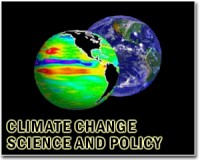 |
Washington (AFP) Feb 22, 2011 Fifty million "environmental refugees" will flood into the global north by 2020, fleeing food shortages sparked by climate change, experts warned at a major science conference that ended here Monday. "In 2020, the UN has projected that we will have 50 million environmental refugees," University of California, Los Angeles professor Cristina Tirado said at the annual meeting of the American Association for the Advancement of Science (AAAS). "When people are not living in sustainable conditions, they migrate," she continued, outlining with the other speakers how climate change is impacting both food security and food safety, or the amount of food available and the healthfulness of that food. Southern Europe is already seeing a sharp increase in what has long been a slow but steady flow of migrants from Africa, many of whom risk their lives to cross the Strait of Gibraltar into Spain from Morocco or sail in makeshift vessels to Italy from Libya and Tunisia. The flow recently grew to a flood after a month of protests in Tunisia, set off by food shortages and widespread unemployment and poverty, brought down the government of longtime ruler Zine El Abidine Ben Ali, said Michigan State University professor Ewen Todd, who predicted there will be more of the same. "What we saw in Tunisia -- a change in government and suddenly there are a whole lot of people going to Italy -- this is going to be the pattern," Todd told AFP. "Already, Africans are going in small droves up to Spain, Germany and wherever from different countries in the Mediterranean region, but we're going to see many, many more trying to go north when food stress comes in. And it was food shortages that put the people of Tunisia and Egypt over the top. "In many Middle Eastern and North African countries," he continued, "you have a cocktail of politics, religion and other things, but often it's just poor people saying 'I've got to survive, I've got to eat, I've got to feed my family' that ignites things." Environmental refugees were described in 2001 by Norman Myers of Oxford University as "a new phenomenon" created by climate change. "These are people who can no longer gain a secure livelihood in their homelands because of drought, soil erosion, desertification, deforestation and other environmental problems, together with the associated problems of population pressures and profound poverty," Myers wrote in a journal of Britain's Royal Society in 2001. "In their desperation, these people feel they have no alternative but to seek sanctuary elsewhere, however hazardous the attempt." Monday's panel cited ways in which climate change has impacted food security and safety. Warmer winters allow pests that carry plant diseases to survive over the cold months and attack crops in the spring, soil physicist Ray Knighton of the US Department of Agriculture said. Increased rainfall -- another result of climate change -- when coupled with more fungal pathogens can "dramatically impact crop yield and quality," said Knighton, adding that greenhouse gases and atmospheric pollutants have changed plant structures and reduced crops' defenses to pests and pathogens. Tirado noted that floods caused by heavy precipitation can spread diseases carried in animal waste into the human food chain. The World Health Organization has estimated that 2.2 million deaths in developing countries are caused each year by food and water-borne diseases, said Sandra Hoffmann of the US Department of Agriculture. And yet, the global economic crisis has pushed climate change "down in priority" on governments' to-do lists, said Todd. "If you're suffering economically, climate change is not going to be the first thing you fund. "Any action you take will be costly, be it in terms of prestige, economics, less oil... I think it's going to take a real crisis to get world opinion to change," he added.
Share This Article With Planet Earth
Related Links Climate Science News - Modeling, Mitigation Adaptation
 Global warming means longer allergy seasons: study
Global warming means longer allergy seasons: studyWashington (AFP) Feb 21, 2011 Ragweed allergy season in North America has grown two to four weeks longer in recent years because of warmer temperatures and later fall frosts, researchers said. Northern parts of the United States and Canada have seen the most dramatic rise in allergy season length between 1995 and 2009, said the study to be published in Tuesday's edition of the Proceedings of the National Academy of Scien ... read more |
|
| The content herein, unless otherwise known to be public domain, are Copyright 1995-2010 - SpaceDaily. AFP and UPI Wire Stories are copyright Agence France-Presse and United Press International. ESA Portal Reports are copyright European Space Agency. All NASA sourced material is public domain. Additional copyrights may apply in whole or part to other bona fide parties. Advertising does not imply endorsement,agreement or approval of any opinions, statements or information provided by SpaceDaily on any Web page published or hosted by SpaceDaily. Privacy Statement |